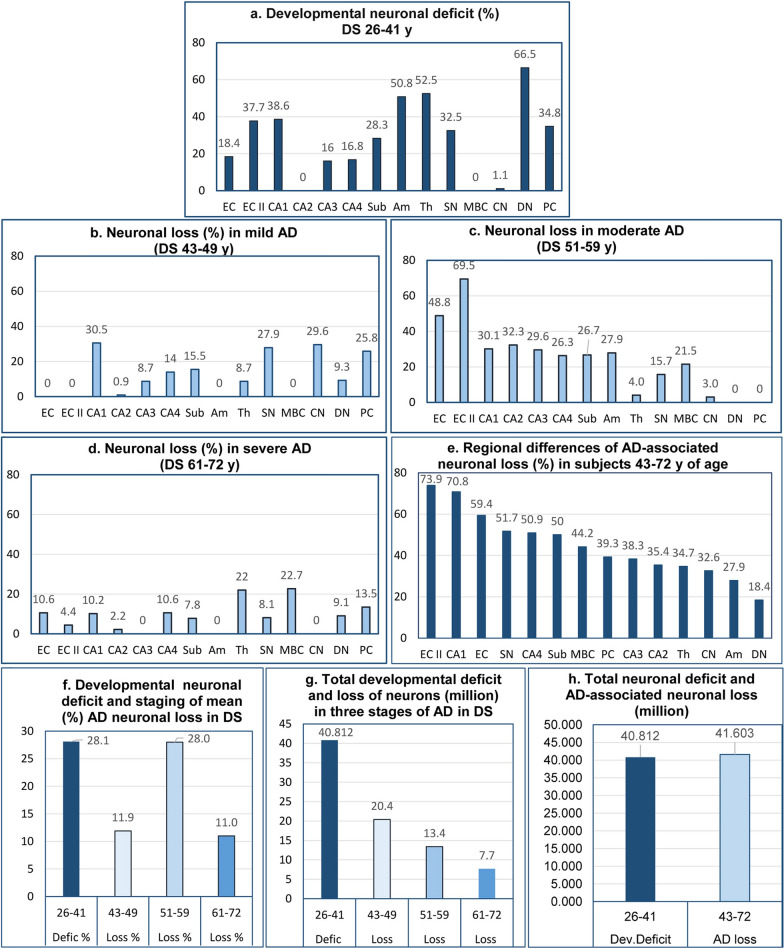Fig. 6.
Developmental neuronal deficits and staging of AD-associated neuronal loss. Graphs characterize region-specific developmental neuronal deficits (a) as well as region-specific neuronal loss in the fourth, fifth, and sixth decades of life of DS subjects (b, c, d, respectively). Cumulative neuronal loss reveals the gradient of different susceptibilities to neurodegeneration and neuronal death reflected in neuronal losses, ranging from 18.4% in the dentate nucleus to 73.9% in the second layer of the entorhinal cortex (e). Developmental deficit of neurons in examined structures is estimated as 28.1%, whereas percentage of lost neurons increases from 11.9% in fourth decade to top level (28.0%) in fifth decade and decreases to bottom level (11.0%) in sixth decade of life of DS subjects (f). The measure of dynamic of AD-associated neuronal loss is the top level of neuronal loss (20.4 million) in the early stage (fourth decade) and the decline of neuronal loss to 13.4 million in the fifth decade and further decline to the lowest level (7.7 million) in the sixth decade (g). Surprisingly, the estimated total developmental deficit of neurons (40.8 million) contributing to developmental intellectual deficits is almost identical with the total neuronal loss (41.6 million) contributing to AD-associated dementia in DS subjects (h)

